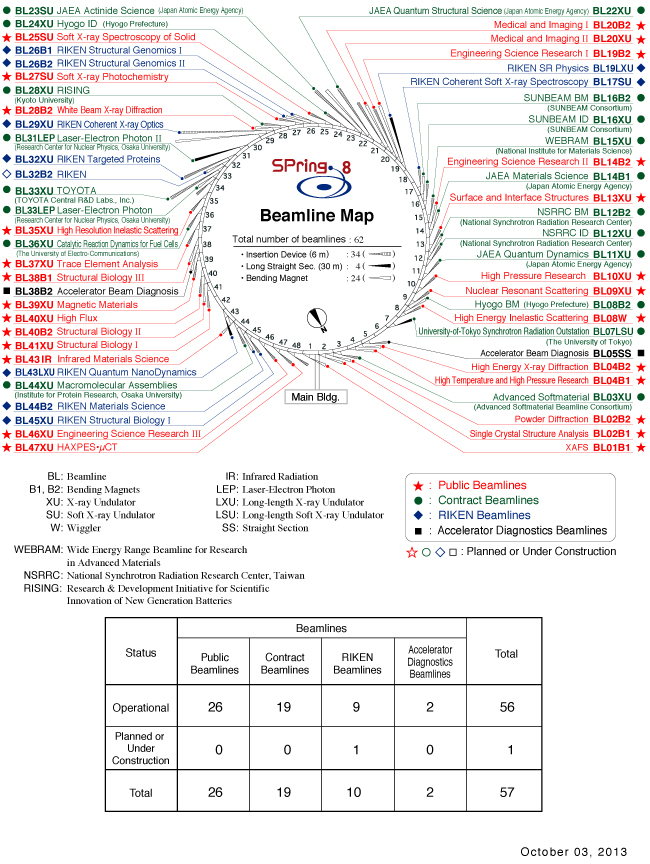Factory to produce “dream light”
One of our goals is for people to have a better understanding of SPring-8. To make our vision a reality, we created this brochure entitled, Challenging the Mysteries of Science with Dream Light. This is our first publication of collective scientific achievements since SPring-8 was opened to users in October 1997.
I am often asked to describe SPring-8 in one word. However, it is nearly impossible to pick just one word. If you look at the beamline map on the next page, you will intuitively understand why this is so difficult. Unlike other factories that mass produce the same product, SPring-8 has 57 unique beamlines. Before I answer the question, “What is SPring-8?” ponder the following. Suppose that you visited all 57 beamlines and asked each researcher, “What are you doing at SPring-8?” Although each researcher would easily answer, the individual responses would vary considerably. One researcher may answer, “I am investigating the structures of proteins that govern biological phenomena,” while another may reply, “I am analyzing the interior structure of the Earth.” The range of responses is due to the fact that a wide variety of experiments are conducted at SPring-8 from probing the fine structure of semiconductors to examining automobile catalysts and everything in between.
Now that you grasp some of the diversity at SPring-8, you can understand how difficult it is to describe SPring-8 in a single word. In my opinion, the single word that best describes SPring-8 is a giant “microscope” because our facilities are used to “see” materials. Like an enormous microscope, SPring-8 utilizes light (or electromagnetic waves) in the broad sense to “visualize” materials. This light, which is emitted from accelerators, is called synchrotron radiation. Synchrotron radiation includes various types of light ranging from infrared light to X-rays. (Visible light of synchrotron radiation is not utilized because lasers are a high quality visible light source.) SPring-8 is the one of the world's most powerful synchrotron radiation sources, and consequently, it produces superior, bright, and highly directional synchrotron radiation to “see” materials.
Hence, we have referred to synchrotron radiation as “dream light.” Researchers fully grasp the advantageous of this “dream light”. For example, the general laboratory X-ray sources commonly used at universities and research centers are not powerful enough to probe molecular structures, but they can be clearly seen with synchrotron radiation X-rays at SPring-8. I hope you understand why this brochure is titled Challenging the Mysteries of Science with Dream Light. SPring-8 is a factory to produce “dream light.” To date, our “dream light” has elucidated many mysteries of nature.
This brochure is a collection of select major achievements. Because advances and achievements encompass a broad range of fields, we have categorized them into seven fields. In addition to these seven fields, numerous achievements have been attained in industrial applications, and about 20% of SPring-8's users are affiliated with industry (and these advances are published in a separate brochure entitled, Successful Results of Industrial Applications at SPring-8, which is available on the SPring-8 website).
Figuratively speaking, I like to compare SPring-8 to Mt. Yatsugatake (an eight peak mountain). Although Mt. Yatsugatake is not as distinctive as Mt. Fuji, it is attractive. Similarly, the eight peaks of Mt. SPring-8 are the seven fields and the industrial application. Because Mt. SPring-8 has numerous peaks, even weathered professionals have a hard time conquering all eight peaks. Thus, I recommend that you climb one peak at a time, beginning with the one that interests you most. I hope this brochure will be a good companion for your adventure.
Sakata Makoto
Editor in Chief, Editorial Board for SPring-8 Scientific Achievements
